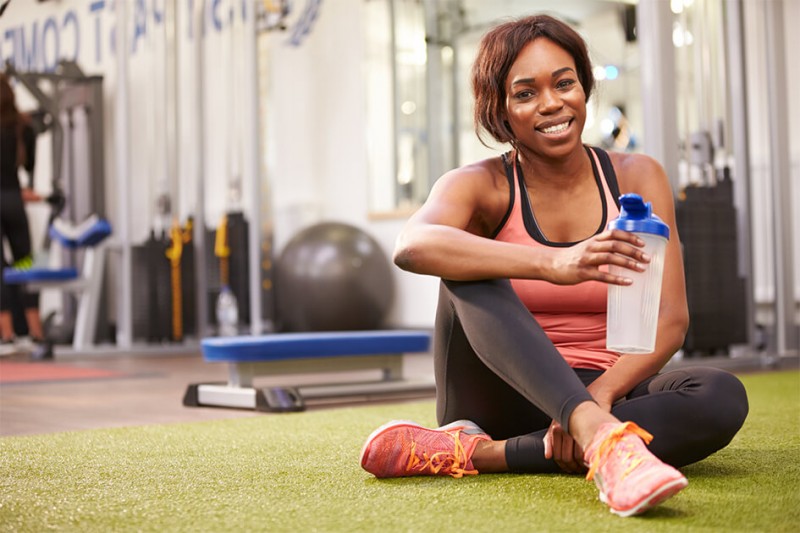
In the realm of women's health, a persistent debate surrounds the question: Should one exercise during periods? This article delves into the intricate relationship between exercise and hormonal changes in women, shedding light on the benefits, considerations, and potential impact on overall well-being.
Before we embark on the exercise journey, let's decipher the hormonal symphony that orchestrates the menstrual cycle.
The menstrual cycle unfolds in distinct phases, each accompanied by hormonal fluctuations.
Menstruation, or the menstrual phase, is the starting point of the cycle. During this phase, estrogen and progesterone levels are at their lowest. This hormonal low sets the stage for the body to shed the uterine lining, resulting in the familiar menstrual flow. It's a time when many women may experience fatigue and mild discomfort.
Following menstruation, the body enters the follicular phase. This stage is characterized by a gradual rise in estrogen levels. Estrogen, often referred to as the "vitality hormone," plays a crucial role in energizing the body and mind. This phase is generally considered more conducive to physical activity due to the increasing energy levels.
Ovulation marks the midpoint of the menstrual cycle. Estrogen peaks during this phase, contributing to heightened endurance and improved muscle recovery. Some women may find that their exercise performance is at its peak during ovulation.
The luteal phase follows ovulation and is characterized by a surge in progesterone levels. This increase in progesterone may impact energy levels and mood. Some women report feeling more fatigued or irritable during this phase, which could influence their exercise preferences and intensity.
Exercise emerges as a natural remedy for menstrual discomfort. Engaging in physical activity prompts the release of endorphins, the body's natural painkillers, which can help alleviate cramps and improve mood. While high-intensity workouts might not be suitable for everyone, gentle exercises like yoga or walking can be beneficial.
Contrary to the belief that periods are synonymous with fatigue, regular exercise during this time can boost energy levels. The endorphin release and improved circulation contribute to a sense of vitality, combating the lethargy often associated with menstruation.
Exercise is a powerful mood enhancer. The endorphins released during physical activity act as natural mood lifters, potentially alleviating premenstrual tension and irritability. Incorporating exercise into one's routine can be a proactive approach to managing mood fluctuations during the menstrual cycle.
Quality sleep is crucial for overall well-being, and exercise can play a role in achieving it. Engaging in regular physical activity has been linked to improved sleep patterns. Establishing a consistent exercise routine, even during periods, can positively influence sleep quality, contributing to better overall health.
One of the fundamental principles of exercising during periods is to listen to your body. Every woman's experience is unique, and how one feels during menstruation can vary. If the body signals a need for rest or a modification in exercise intensity, it's essential to heed those signals.
Adapting the intensity and duration of workouts based on how one feels is key. While some women may find high-intensity workouts invigorating, others might prefer gentler forms of exercise during menstruation. It's about finding a balance that aligns with individual comfort levels.
Maintaining proper hydration and nutrition is crucial, especially during periods. Adequate hydration supports the body's functions, and a balanced diet provides essential nutrients. These factors become even more critical when engaging in physical activity. Proper nourishment ensures the body has the energy and resources it needs.
The type of exercise chosen during periods matters. Opting for activities that align with comfort levels is essential. Yoga, with its focus on gentle movements and mindfulness, can be particularly beneficial. Similarly, walking, light cardio, or swimming are low-impact exercises that many women find comfortable during menstruation.
There's a common misconception that engaging in exercise during periods can lead to menstrual irregularities. However, moderate exercise is unlikely to disrupt the menstrual cycle. In fact, regular physical activity can contribute to menstrual regularity by promoting overall health and hormonal balance.
Another myth to dispel is the notion that exercise negatively impacts fertility. When balanced, exercise is not a hindrance to fertility; on the contrary, it can promote reproductive health. Maintaining a healthy lifestyle, which includes regular exercise, contributes to overall well-being, potentially enhancing fertility.
In the perennial debate on exercising during periods, the answer is not one-size-fits-all. It's about embracing a holistic approach to women's health, considering individual variations and needs. Listening to your body, adapting workouts, and debunking myths are pivotal in navigating this aspect of female well-being.
So, should one exercise during periods? The resounding answer is, yes, but with mindfulness, adaptability, and a keen awareness of the body's signals. In summary, understanding the hormonal dynamics throughout the menstrual cycle provides valuable insights into how exercise can be tailored to complement each phase. The benefits of alleviating menstrual symptoms, boosting energy, enhancing mood, and improving sleep quality underscore the positive impact of staying active. However, it's crucial to approach exercise during periods with consideration, adapting to individual needs, and debunking common myths that may deter women from embracing physical activity during this natural biological process.
Honda Targets 350cc Segment Again with the Launch of Honda CB350: Explore Its Features and Price
Cyclone Midhili Set to Make Landfall on Bangladesh Coast Today: Check Latest Updates
Clear Skies Forecast: Ideal Weather Conditions for World Cup Final at Narendra Modi Stadium